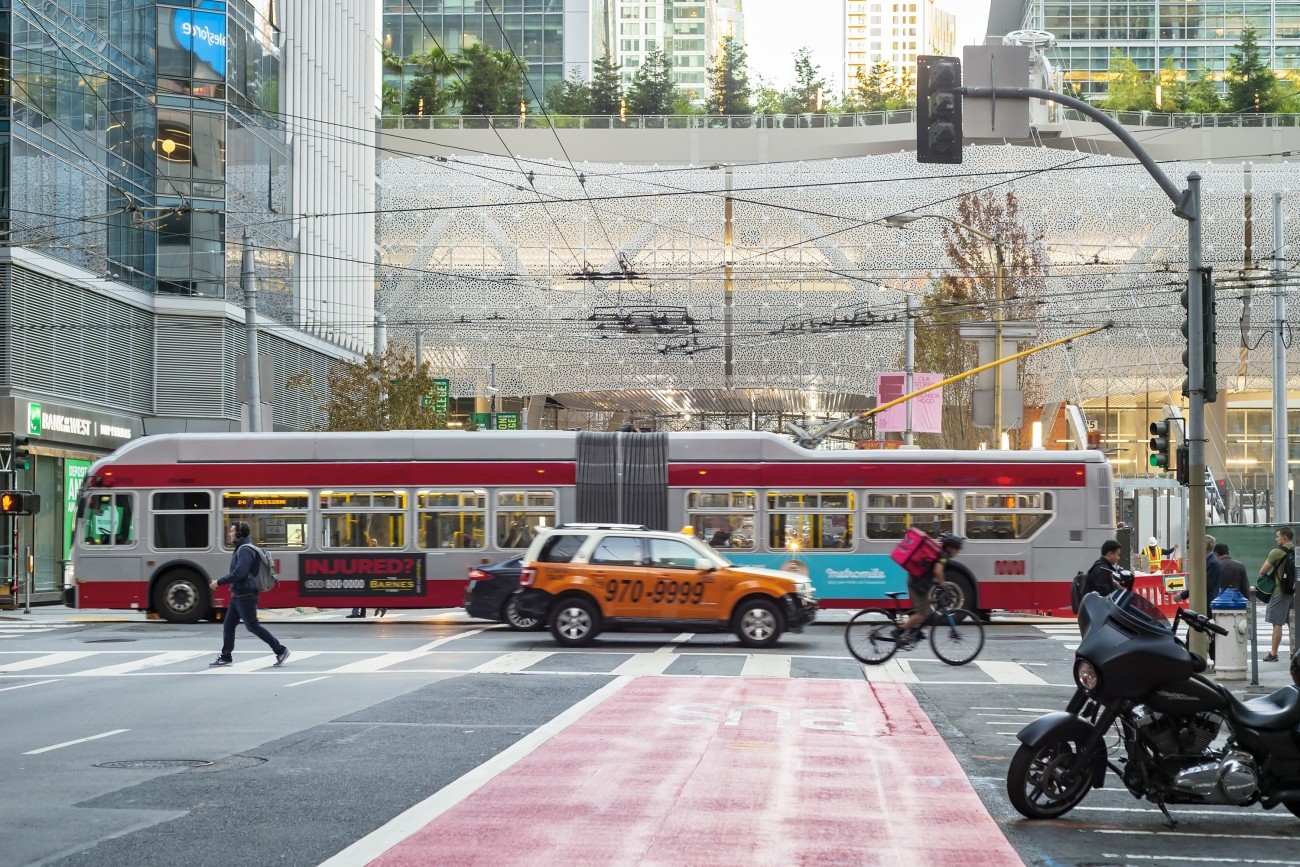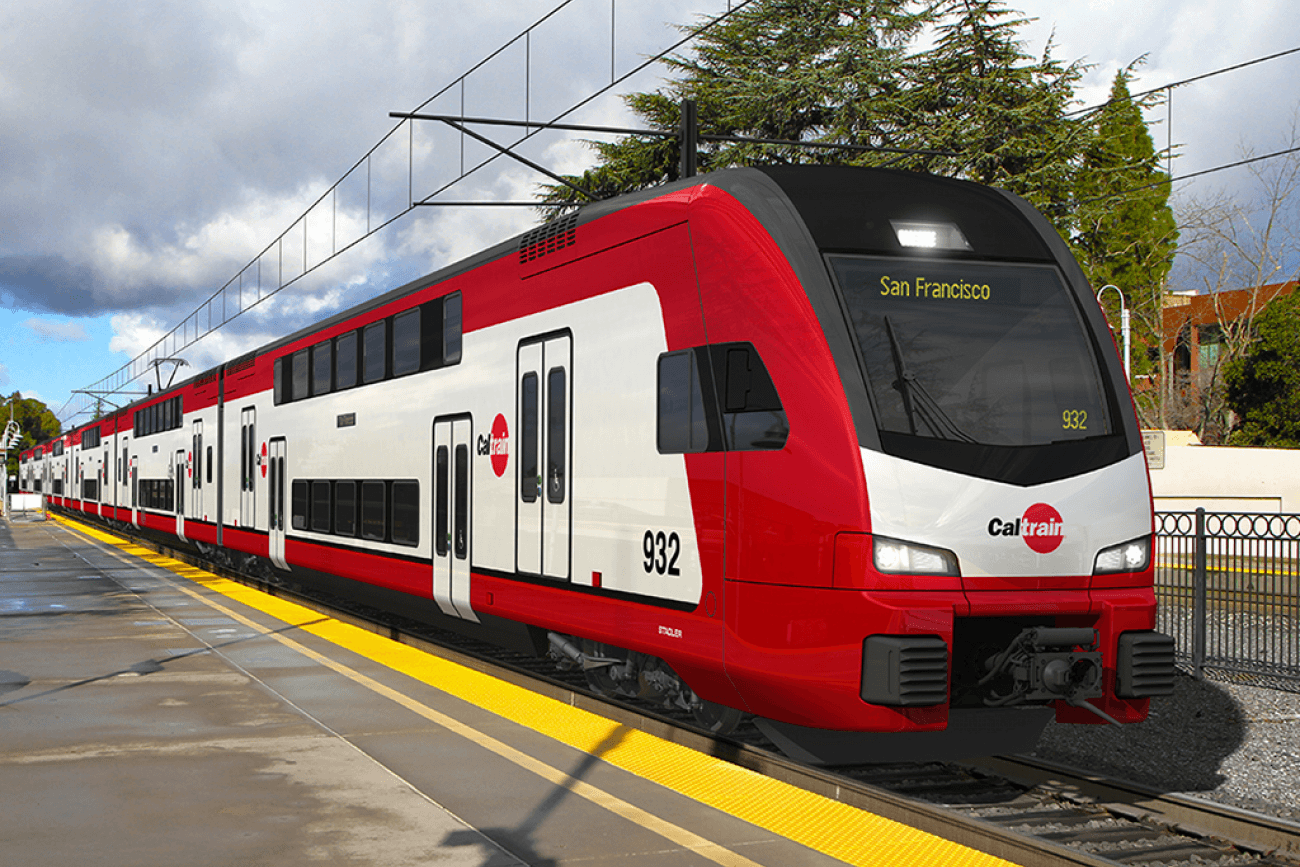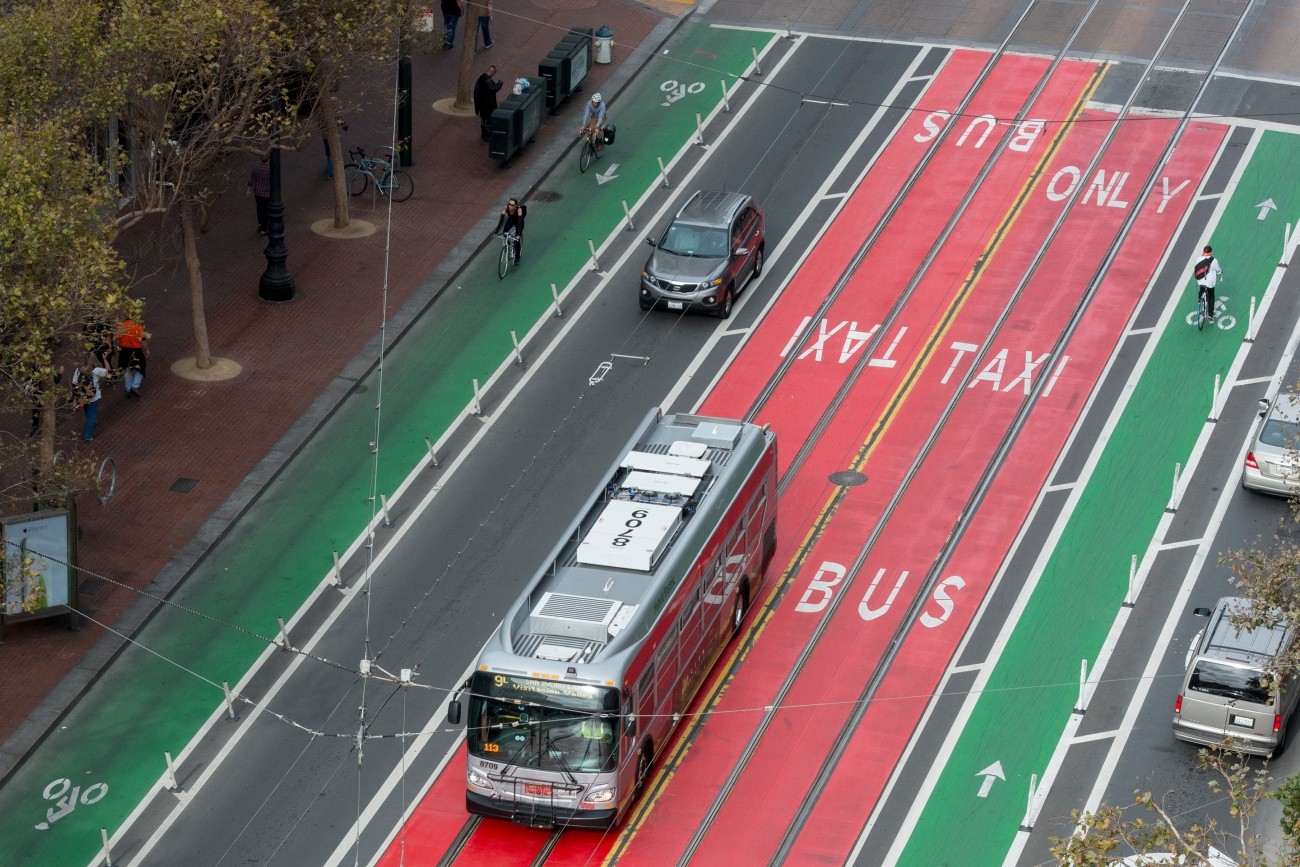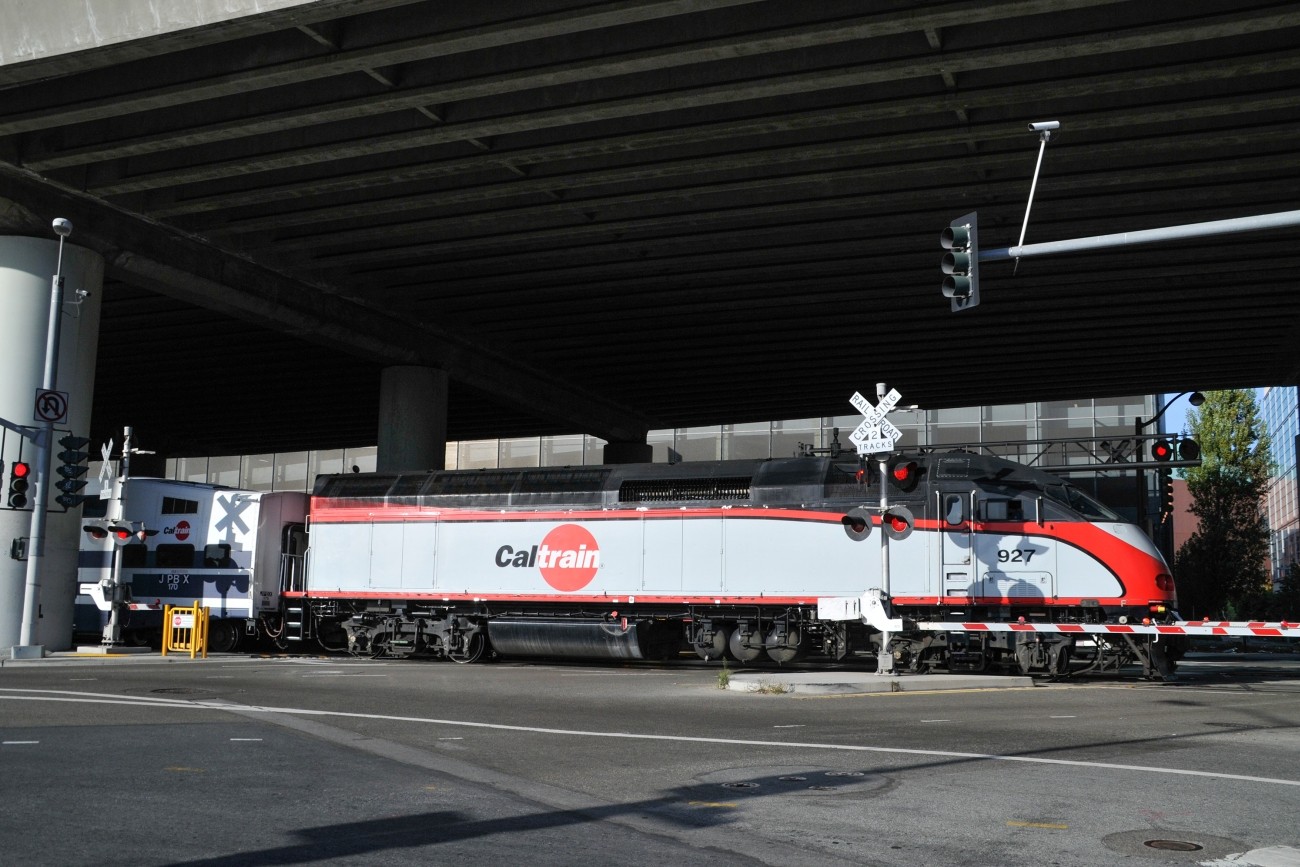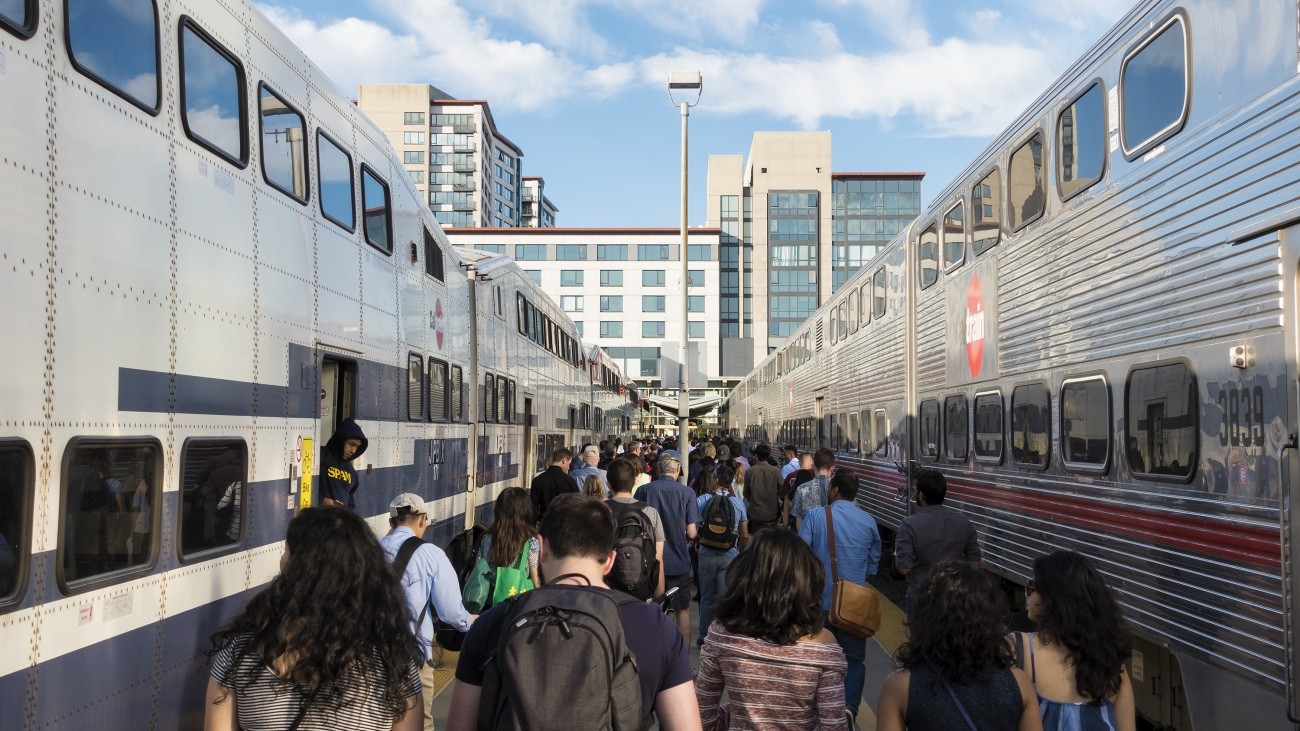
Photo: Sergio Ruiz, Flickr
Introduction
The Portal project (also known as the Downtown Rail Extension) will extend Caltrain and future California High-Speed Rail service from the existing 4th and King railyard to the Salesforce Transit Center. The project will construct a new underground station at 4th and Townsend streets and bring rail service to the underground train box that was built as part of the construction of the Salesforce Transit Center.
The Transbay Joint Powers Authority is responsible for the Downtown Rail Extension project.
In 2019, the Transportation Authority Board accepted the final report of an expert Peer Review Panel, which was convened to conduct an assessment of the project’s governance, oversight, funding, and delivery strategy. In 2020, the Transportation Authority led development of a six-agency memorandum of understanding to implement most of the recommendations of the Peer Review Panel and to support the Transbay Joint Powers Authority in developing the Project to ready-for-procurement status. Since that time, the Transportation Authority has worked with the TJPA and the other partner agencies to advance the project. Under this agreement, which sunset in May 2024, the Transportation Authority led or co-led efforts to develop the project’s funding plan, delivery strategy, governance blueprint, and ridership forecasts.
In January 2025, the TJPA, the Transportation Authority, and the other partner agencies for the project completed approval of The Portal Project Implementation Memorandum of Understanding (Implementation MOU). The Transportation Authority and the Metropolitan Transportation Commission co-led the preparation of the Implementation MOU, which will serve the project through its delivery.
The Prop L Strategic Plan identifies $300 million in local transportation sale tax funds for The Portal. As a funding partner for The Portal, the Transportation Authority provides project management oversight of the project.
Public Meetings
The TJPA is governed by a Board of Directors, which meets on a regular basis. All TJPA Board meetings are open to the public. The TJPA also has a Citizens Advisory Committee, established to advise the TJPA Board on matters of public interest relating to the Transbay Program.
Timeline
-
2018 – 2019
Transbay Joint Powers Authority and Federal Transit Administration provided local and federal environmental approvals.
-
2020
Transportation Authority allocated half-cent sales tax funds to the Transbay Joint Powers Authority to support development work for the project.
-
2021
Federal Transit Administration advanced the project to the “Project Development” phase of the federal Capital Investment Grant process.
-
2023
Transportation Authority allocated half-cent sales tax funds to the Transbay Joint Powers Authority to support engineering and procurement preparation work for the project.
-
2024
Transportation Authority programmed half-cent sales tax funds in anticipation of future delivery of the project.
Federal Transit Administration advanced the project to the “Engineering” phase of the federal Capital Investment Grant process and established the CIG funding share of $3.38 billion.
-
2025
Execution of The Portal Project Implementation MOU, among the six partner agencies for the project
-
2030s
Transbay Joint Power Authority completes project, pending funding.
Project Partners
The Transbay Joint Powers Authority is leading the development and implementation of The Portal, in partnership with:
- California High-Speed Rail Authority
- Caltrain
- City and County of San Francisco
- Metropolitan Transportation Commission
- Transportation Authority
Cost and Funding
The cost of the Downtown Rail Extension project was estimated in 2023 at approximately $8.25 billion. Of this amount, $728.5 million reflects the cost of the train box, which was completed as part of the construction of the Salesforce Transit Center.
In May 2024, the Federal Transit Administration established the project’s federal Capital Investment Grant funding share of $3.38 billion. The project’s Funding Plan includes:
- Federal Transit Administration Capital Investment Grant: $3.38 billion (Federal)
- Completed Train Box: $728.5 million ($400 million Federal; $328.5 million non-Federal)
- Committed/Budgeted Funds: $1,390 million:
- Local/Regional/State:
- Transbay Transit Center District/Area Funds: $847 million
- SFCTA Prop K: $21.5 million
- SFCTA Prop L: $300 million
- Metropolitan Transportation Commission Regional Measure 3: $325 million
- Developer Contributions: $62 million
- Land Sale Proceeds: $6 million
- SFCTA Prop L/Regional Transportation Improvement Program Fund Exchange: $18 million
- Rail Operator Contributions: $6 million
- Transportation Intercity Rail Capital Program (TIRCP) Project Development Funding: $60 million
- Federal:
- Federal Rail Administration CRISI Grant: $25 million
- Local/Regional/State:
- Planned Funding: $2,751 million, including additional local, regional, state, and federal funding.
The Transportation Authority and the TJPA are working with project partners to secure remaining funding commitments for the project, including federal, state, regional, and local sources.
Resources
Transbay Joint Powers Authority website
Contact
Transbay Joint Powers Authority at info@tjpa.org

The Portal will:
- Close the regional rail connectivity gap from the Peninsula to downtown San Francisco, enabling the Salesforce Transit Center’s full potential
- Create an essential link in the mega-region and state’s rail network to improve mobility
- Be a first step for realizing the Link21 project; The Portal would be the first phase of a potential future standard-gauge rail connection across the Bay
- Improve sustainability and environmental quality
Passenger benefits
- Enables California High-Speed Rail to provide a one-seat ride between downtown San Francisco and Los Angeles
- Promotes seamless transfers between transit services at and near the Salesforce Transit Center, including BART, Muni, and buses serving the East Bay, North Bay, and other regional and long distance destinations
- Increases access to public transportation in an area of the city with significant population growth forecast over the next 30 years
Environmental and Economic benefits
- Improves air quality and reduces vehicle miles traveled (VMT) on US-101, one of the most congested corridors in the Bay Area
- Builds two new rail stations in areas targeted for investment, new affordable homes, and job growth
- Enhances access to jobs and housing, improving opportunities for disadvantaged communities
- Contributes to a more integrated statewide transportation system
- Creates jobs for underrepresented groups through small business enterprise, disadvantaged business enterprise, and veterans programs
